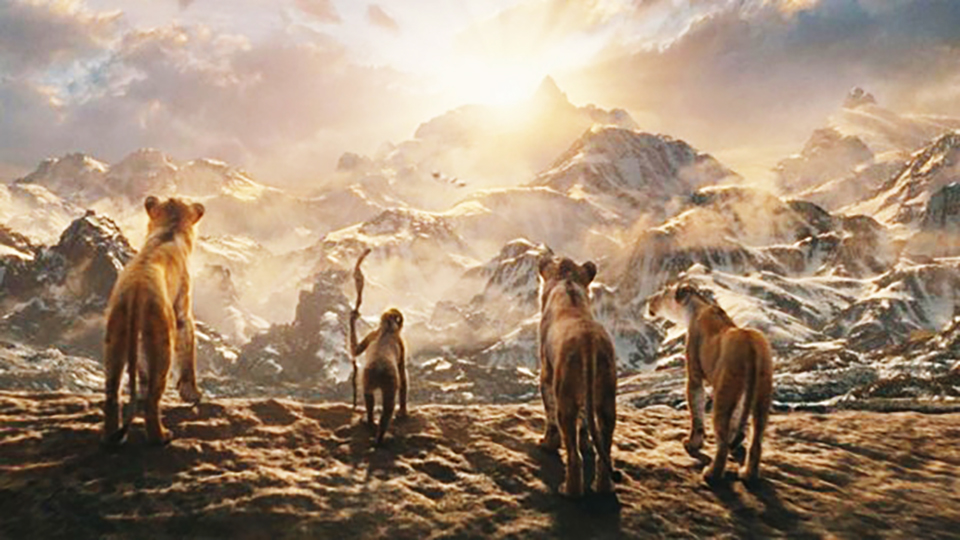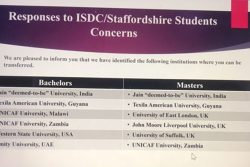It is important to remember that “The Lion King” is a loose adaptation of William Shakespeare’s “Hamlet”. The tale of the young prince and his villainous uncle does not end in the slew of dead bodies like the original play but offers a happier ending. The way the dramatic beats can be repurposed for an animal kingdom monarchy is one of several eternal signs of Shakespeare’s enduring skills as a dramatist. There is a level of narrative canniness and economy of characterisation that make the dramatic movement of a son avenging his father’s death so compelling. So how does a follow-up to the dramatic import of Shakespeare’s story even decide to approach this world successfully? This new entry, “Mufasa: The Lion King”, does not have the answer.
Disney’s insistence on turning animated films into “live-action” versions reached its nadir with the adaptation of “The Lion King” in 2019. Jon Favreau’s leadenly directed version of the 1994 animated tale used photorealistic CGI to imitate real-life lions, turning the exuberant, rhythmic animation of original film into lumbering photorealistic life-like animals. Despite the turgidity, that new “The Lion King” was a box-office smash. It was no surprise, then, that a follow-up film was announced in 2020. The surprise of it was filmmaker Barry Jenkins, most notable for his intimate interpersonal dramas about Black life, being tapped to direct it. The recently released “Mufasa: The Lion King”, explores events following the birth of Kiara (Simba’s daughter) as well as the events that lead to her grandfather Mufasa becoming the King of Pride Rock.
One reason the 2019 remake of “The Lion King” floundered was its insistence on thinking the same beats that work in an animated film would work in this photorealistic CGI. A wiser production team might have sat with the schism between animal expressiveness in animation and in real life and considered how a script writing to incorporate the lack of expressiveness in real animals might benefit these characters better. One of the best animal-oriented stories of the 1990s is the live-action film “Babe”, which uses several real animals (and a handful of humans) to tell a story about an intrepid pig who becomes famous. Although Oscar-nominated performance as the farmer who cares for Babe is a highlight of the film, several sequences of the animal comedy move by with realistic animals on screen conveying emotions. “Babe”, more than any film within the last few decades, is an earnest reminder that real animals can be used in the place of animation to quite moving effect. What they need is a story written to complement the realism of animals.
Sadly, Jeff Nathanson, who wrote the remake, has returned for this sequel/prequel and despite a new story unrestricted by the first animated script, “Mufasa” comes equipped with a screenplay that has none of the wisdom of “Babe” in thinking how realistic animals might benefit from script-work. Nathanson frames this new film as a story-within-a-story. In the “present” day, Rafiki (John Kani), Timon (Billy Eichner) and Pumbaa (Seth Rogen) are enlisted to babysit Simba’s cub Kiara (Blue Ivy Carter) as his lioness is pregnant. To calm a fearful Kiara, Rafiki begins to tell her the story of a brave young cub who would become a King – her grandfather Mufasa. Most of the story takes place in the past as a young Mufasa is separated from his family and is taken in by another lion cub (Taka) and his family. Like “Gladiator” earlier in the year, the trailers for “Mufasa” already revealed for general audiences the identity of Taka as the lion who would become Scar, Mufasa’s brother and murderer. There’s a potentially engaging story to be told about deepening the filial dynamic between Mufasa and Taka/Scar, but Nathanson’s script is not the film to do it.
“Mufasa” misses the sincerity of tone and the earnestness of mood that is so vital to stories of animals. The film is best in brief moments where Taka’s parents (Lennie James as Obasi and Thandiwe Newton as Eshe) clash on whether it is wise to take in the stray Mufasa. The two deliver the sharpest voice-performances as Eshe insists on keeping Mufasa, but Obasi’s arrogance insists on there being no potential threat for his son’s power. But even their energetic voice-work is not enough to liven the tetchy plotting of these early sections. Rather than taking notes from the specific interpersonal dynamics of the original, Nathanson’s script is weighed down by the responsibility of getting us to where we need to – so as Mufasa and Taka grow up into lions voiced by Aaron Pierre and Kelvin Harrison Jr, Davidson’s script is unable to eke out an identity for them beyond Mufasa’s brave perfection and Taka’s anxious doubting. The long press tour for the film has shown that Pierre and Harrison Jr have infinite chemistry, but not enough to cut through the flat characterisations as written.
This is not the first follow-up story to Disney’s “The Lion King”. After the success of the original film in the nineties, Disney released a handful of sequels – including direct-to-DVD releases. One might have hoped that decades of consideration made for a more robust story, but early on as Mufasa and his parents search for a promised land amidst a barren earth, it is clear that Nathanson has little to meaningfully convey and in the last act of the film as the plot struggles to justify the imminent enmity between the two friends, who become brothers, “Mufasa” struggles significantly to establish genuine narrative beats for its characters. When a young Rafiki and a young Sarabi (Mufasa’s future wife) join the story, “Mufasa” feels too much like an uninspired prequel counting off the steps it needs to add all the things from the past we expect. There is no energised passion in this story. No plot-points that demand to be told, instead the story moves long beat by dull beat.
Even Jenkins, a dependable director, cannot do much to pull the emotion needed from these photorealistic but dead-eyed animals. Lin Manuel Miranda is a commendable musician, but his work on the score here are among his weaker efforts offering none of the majesty or electricity one might hope from this story. Too often, “Mufasa” – like its photorealistic predecessor – comes across as a “National Geographic” documentary with voice-work put to it. And none of the voice-work, or the writing, offers enough punchiness in its cadence or development to feel as vital as a piece of film. In 2019, I pointed out that the fundamental flaw of the photorealistic nightmare that was the remake of “The Lion King” was its insistence on realism as an inherently compelling way to engage with anthropomorphic characters. This flaw persists. “Mufasa” is marginally better than the 2019 film because it moves with the energy of something that is its own rather than an imitation of an earlier film, but it still feels like a whimper more than a roar. The handful of vivid moments are not enough to justify the film, and it’s hard not to feel that Disney needs to wrap up this insistence on photorealistic renderings of this world until it has something more profound to offer.
Mufasa is now playing in cinemas










